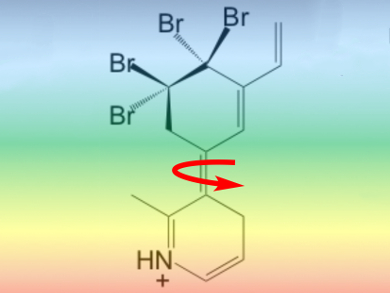Light-driven “molecular motors” can convert light energy into directed mechanical motion. These molecules can be used to perform machine-like functions at the nanoscale, similar to those accomplished by natural protein complexes. However, such motors typically need to be fueled by UV light, which can harm tissue or materials. It remains a challenge to develop motors that can be driven by harmless visible light instead—especially for applications in biology and medicine.
Bo Durbeej and Jun Wang, Linköping University, Sweden, have designed molecular motors that use visible light to fuel rotary motion. The molecules (example pictured) feature dihydropyridinium and cyclohexenylidene molecular halves and have only five conjugated double bonds. The structure can be considered a minimal design for inducing fast and efficient rotary motion with visible light.
The researchers evaluated the motor performance using quantum chemical calculations and molecular dynamics (MD) simulations. They found that the molecules can use photons with energies well below 3 eV to produce a full 360 ° unidirectional rotation, caused by two double-bond photoisomerizations. The isomerizations were found to occur with short excited-state lifetimes and high quantum yields. The results show that different desirable features of light-driven molecular motors could be simultaneously realized in one basic design. The team points out that the molecules should be synthetically accessible via a nitrilium ion cyclization.
- Toward Fast and Efficient Visible-Light-Driven Molecular Motors: A Minimal Design,
Jun Wang, Bo Durbeej,
ChemistryOpen 2018, 7, 583–589.
https://doi.org/10.1002/open.201800089




